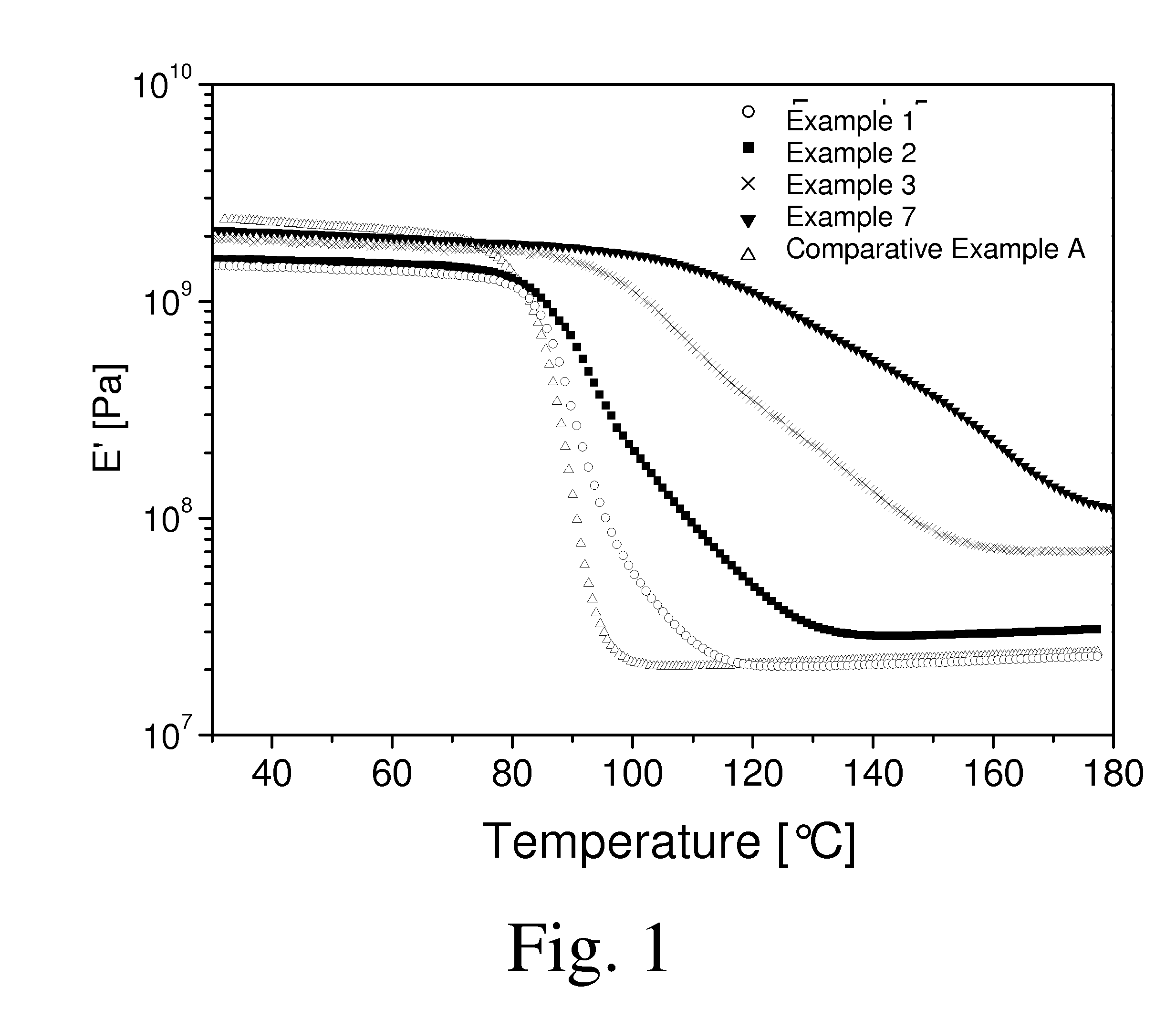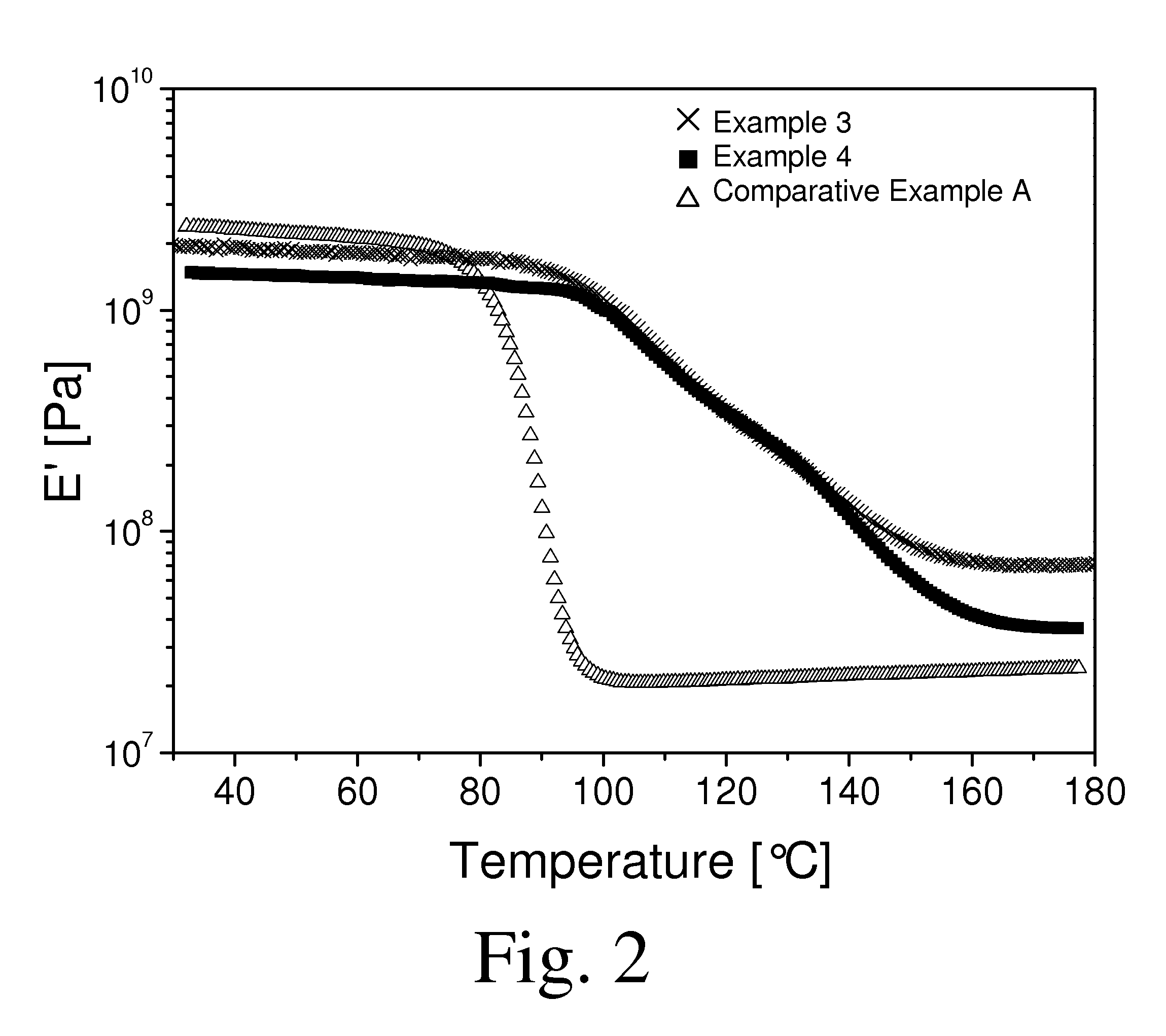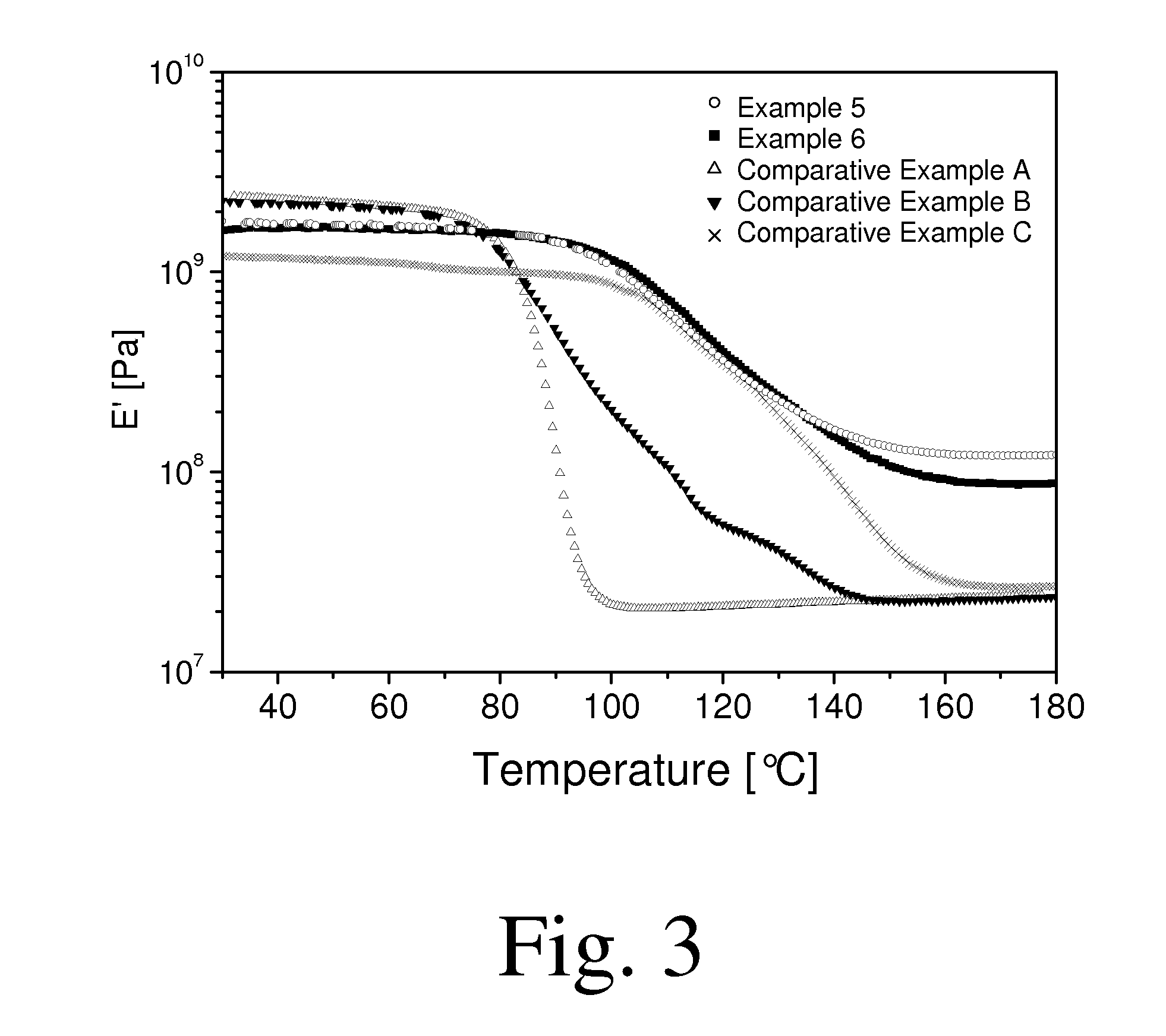Thermosettable resin compositions
a technology of resin compositions and compositions, applied in the field of thermosettable resin compositions, can solve the problems of limited toughness of stiff and brittle materials, insufficient partial condensation of alkoxy groups in silane compounds, and use of organic solvents
- Summary
- Abstract
- Description
- Claims
- Application Information
AI Technical Summary
Benefits of technology
Problems solved by technology
Method used
Image
Examples
synthesis example 1
[0086]Into a batch reactor equipped with a mechanical stirrer, thermometer, nitrogen gas introduction tube, a mixture of 150 grams (g) of 3-aminopropyltriethoxysilane (APS, produced by ABCR) and 64.8 g of 3-aminopropylmethyldiethoxysilane (APMS, produced by ABCR) were introduced. The mixture of APMS and APS was heated to 90° C. and purged with nitrogen saturated by water vapor in order to promote the hydrolysis and condensation reactions. The water saturation of the gas was performed at 25° C. in bubbler and outgoing nitrogen contained 16 mg H2O in 1 dm3. Ethanol formed during the reactions was evaporated and then condensed in a separate vessel. The course of reactions was controlled by measuring the viscosity of the mixture. The reaction was stopped when the viscosity reached 72 mPa·s at 25° C. From the Si NMR results, the conversion of alkoxysilane groups was 63%. The obtained product (reactive inorganic clusters) was a clear transparent liquid which was used for further preparati...
synthesis example 2
[0087]In the same reactor as described in Synthesis Example 1, a mixture of 150 g of APS and 64.8 g of APMS were introduced in the reactor. The reaction was carried out following the same procedure as described in Synthesis Example 1. The reaction was stopped when the viscosity reached 60 mPa·s at 25° C. From the Si NMR results, the conversion of alkoxysilane groups was 57%. The obtained product (reactive inorganic clusters) was a clear transparent liquid which was used for further preparation of final organic-inorganic hybrid networks.
synthesis example 3
[0088]In the same reactor as described in Synthesis Example 1, a mixture of 150 g of APS and 64.8 g of APMS were introduced in the reactor. The reaction was carried out following the same procedure as described in Synthesis Example 1. The reaction was stopped when the viscosity reached 66 mPa·s at 25° C. The mixture was then heated for 30 min at 90° C. under vacuum in order to remove the residue of ethanol. The obtained product (reactive inorganic clusters) had a viscosity of 108 mPa·s at 25° C., the conversion of alkoxysilane groups was 64% (from Si NMR results). The product was a clear transparent liquid which was used for further preparation of final organic-inorganic hybrid networks.
PUM
| Property | Measurement | Unit |
|---|---|---|
| Temperature | aaaaa | aaaaa |
| Temperature | aaaaa | aaaaa |
| Temperature | aaaaa | aaaaa |
Abstract
Description
Claims
Application Information
 Login to View More
Login to View More - R&D
- Intellectual Property
- Life Sciences
- Materials
- Tech Scout
- Unparalleled Data Quality
- Higher Quality Content
- 60% Fewer Hallucinations
Browse by: Latest US Patents, China's latest patents, Technical Efficacy Thesaurus, Application Domain, Technology Topic, Popular Technical Reports.
© 2025 PatSnap. All rights reserved.Legal|Privacy policy|Modern Slavery Act Transparency Statement|Sitemap|About US| Contact US: help@patsnap.com



